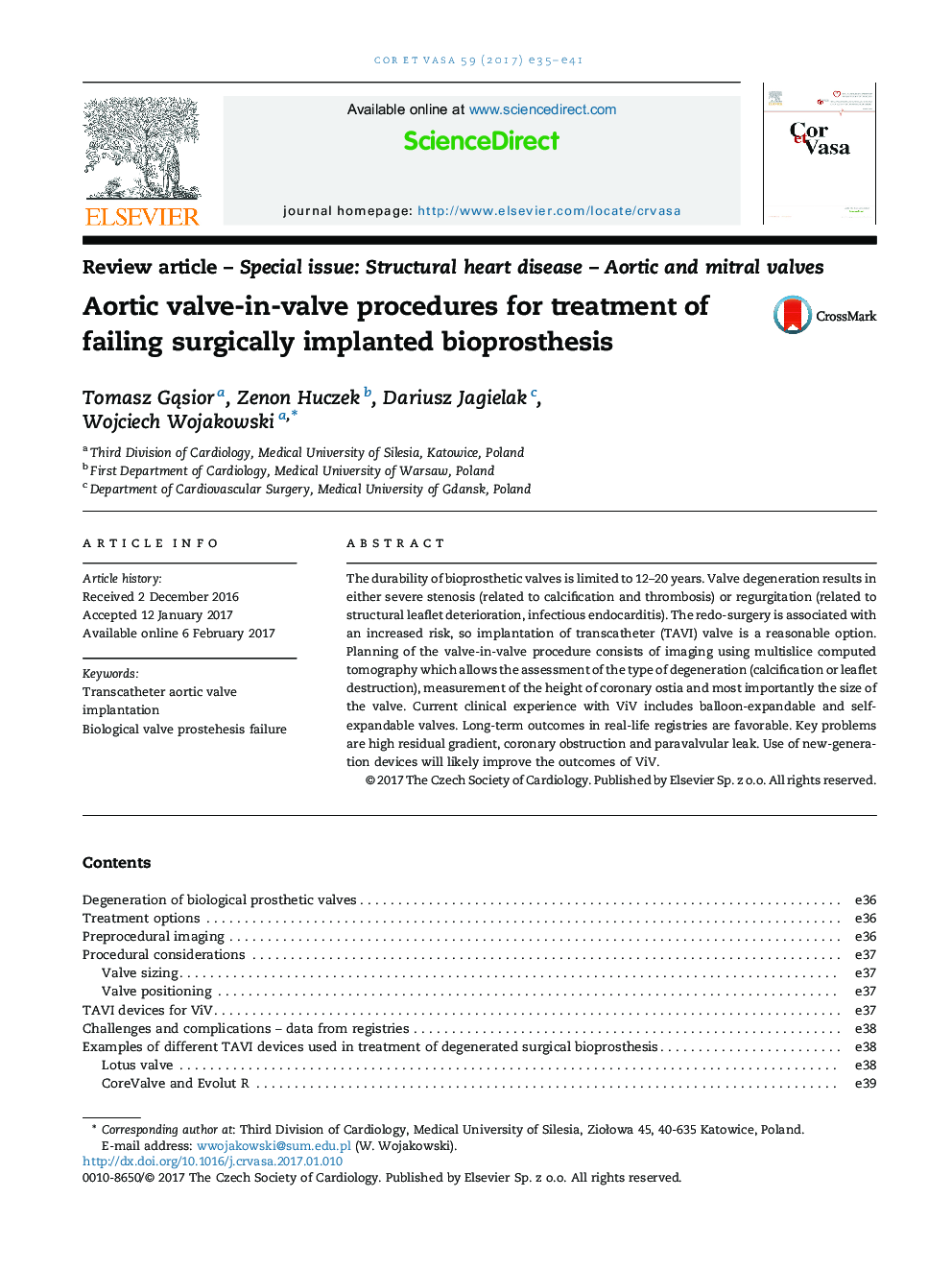| Article ID | Journal | Published Year | Pages | File Type |
|---|---|---|---|---|
| 5577754 | Cor et Vasa | 2017 | 7 Pages |
Abstract
The durability of bioprosthetic valves is limited to 12-20 years. Valve degeneration results in either severe stenosis (related to calcification and thrombosis) or regurgitation (related to structural leaflet deterioration, infectious endocarditis). The redo-surgery is associated with an increased risk, so implantation of transcatheter (TAVI) valve is a reasonable option. Planning of the valve-in-valve procedure consists of imaging using multislice computed tomography which allows the assessment of the type of degeneration (calcification or leaflet destruction), measurement of the height of coronary ostia and most importantly the size of the valve. Current clinical experience with ViV includes balloon-expandable and self-expandable valves. Long-term outcomes in real-life registries are favorable. Key problems are high residual gradient, coronary obstruction and paravalvular leak. Use of new-generation devices will likely improve the outcomes of ViV.
Related Topics
Health Sciences
Medicine and Dentistry
Cardiology and Cardiovascular Medicine
Authors
Tomasz GÄ
sior, Zenon Huczek, Dariusz Jagielak, Wojciech Wojakowski,
